This is a listing of the shorts, feature films, television programs, and television specials in the Looney Tunes and Merrie Melodies cartoon series, extending from 1929 through the present day. Altogether, 1,002 animated shorts alone were released under the Looney Tunes and Merrie Melodies banners from the 1930s through the 1960s. From the beginning to the present day, 1,041 theatrical shorts have been created.
Charlie Dog is an animated cartoon character in the Warner Brothers Looney Tunes series of cartoons. The character was featured in nine cartoons between 1941 and 1958. He is generally characterized as a friendly wise guy.
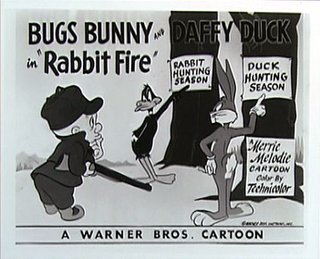
Rabbit Fire is a 1951 Looney Tunes cartoon starring Bugs Bunny, Daffy Duck, and Elmer Fudd. Directed by Chuck Jones and written by Michael Maltese, the cartoon is the first in Jones' "hunting trilogy"—the other two cartoons following it being Rabbit Seasoning and Duck! Rabbit, Duck! It is also the first cartoon to feature a feud between Bugs and Daffy. Produced by Edward Selzer for Warner Bros. Cartoons, the short was released to theaters on May 19, 1951 by Warner Bros. Pictures and is often considered among Jones' best and most important films.
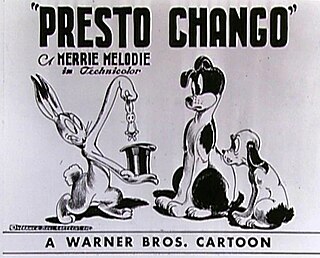
Prest-O Change-O is a 1939 Merrie Melodies cartoon directed by Chuck Jones, and first released on March 25, 1939, by Warner Bros. It is the second appearance of Bugs Bunny as a manic white hare who made his first appearance in Porky's Hare Hunt, a cartoon that was produced and copyrighted in 1937 and released in April 1938, featuring him in the same early design. This is also the character's first appearance in a Merrie Melodies color film. The prototype of Bugs Bunny the screwy rabbit makes his third appearance in the next hare-based short film, Hare-um Scare-um (1939).
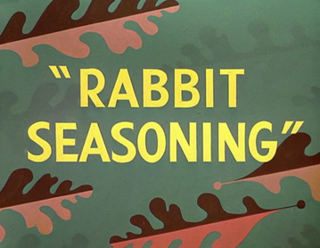
Rabbit Seasoning is a 1952 Warner Bros. Merrie Melodies cartoon directed by Chuck Jones. Released on September 20, 1952, the short stars Bugs Bunny, Daffy Duck and Elmer Fudd.

Bugs Bunny and the Three Bears is a 1944 Merrie Melodies cartoon short directed by Chuck Jones and written by Tedd Pierce. The short was released on February 26, 1944, and features Bugs Bunny. This short marks the first appearance of Jones' dysfunctional version of The Three Bears, and is a parody of the old fairy tale, Goldilocks and The Three Bears.

Frigid Hare is a Warner Bros. Merrie Melodies short, released on October 8, 1949. It is directed by Chuck Jones and written by Michael Maltese, and features Bugs Bunny. The title can be seen as a simple play on "frigid air" and/or on the refrigerator brand called "Frigidaire".

Slick Hare is a 1947 Merrie Melodies cartoon, directed by Friz Freleng. The film was released on November 1, 1947, and features Bugs Bunny and Elmer Fudd. It parodies the Mocambo nightclub in Los Angeles—in the cartoon referred to as "The Mocrumbo". Mel Blanc voices Bugs, Arthur Q. Bryan voices Elmer Fudd and impressionist Dave Barry portrays Humphrey Bogart. The title is a pun on "hair", from an era when hair slicked down by oil was a popular fashion style for men.

Looney Tunes Golden Collection: Volume 4 is a DVD box set that was released by Warner Home Video on November 14, 2006.

Mississippi Hare is a 1949 Looney Tunes cartoon short directed by Chuck Jones and written by Michael Maltese. The short was released on February 26, 1949, and features Bugs Bunny.

Haredevil Hare is a 1948 Looney Tunes cartoon directed by Chuck Jones. It stars Bugs Bunny and it is the debut for Marvin the Martian — although he is unnamed in this film—along with his Martian dog, K-9. Marvin's nasal voice for this first film is different from the later one he is most known for. This is also the last pre-August 1948 Looney Tunes and Merrie Melodies cartoon whose copyright was sold to Associated Artists Productions.

Acrobatty Bunny is a 1946 Warner Bros. Looney Tunes short directed by Robert McKimson. The short was released on June 29, 1946, and stars Bugs Bunny and Nero the Lion. This was the first cartoon McKimson directed that starred Bugs Bunny.
Beanstalk Bunny is a 1955 Warner Bros. Merrie Melodies cartoon directed by Chuck Jones. The short was released on February 12, 1955, and stars Bugs Bunny, Daffy Duck and Elmer Fudd. The cartoon's story is derived from the fairy tale "Jack and the Beanstalk".

The Abominable Snow Rabbit is a 1961 Warner Bros. Looney Tunes theatrical cartoon directed by Chuck Jones and co-directed by Maurice Noble, with a story by Tedd Pierce. The short was released on May 20, 1961, and stars Bugs Bunny and Daffy Duck.

Looney Tunes Golden Collection: Volume 5 is a Looney Tunes collection on DVD. Following the pattern of one release each year of the previous volumes, it was released on October 30, 2007.
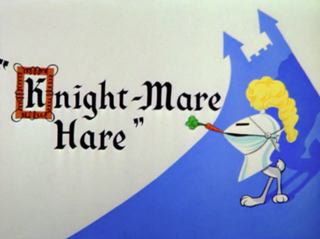
Knight-mare Hare is a 1955 Warner Bros. Merrie Melodies theatrical cartoon directed by Chuck Jones and written by Tedd Pierce. The short was released on October 1, 1955, and stars Bugs Bunny.
This is a listing of all the animated shorts released by Warner Bros. under the Looney Tunes and Merrie Melodies banners between 1940 and 1949.
Playboy Penguin is a character in the animated cartoon Looney Tunes, created by Chuck Jones. He debuted in 1949's Frigid Hare and he re-appeared in 1950's 8 Ball Bunny.
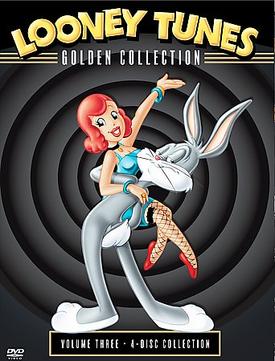
Looney Tunes Golden Collection: Volume 3 is a DVD box set from Warner Home Video that was released on October 25, 2005. It contains 60 Looney Tunes and Merrie Melodies theatrical short subject cartoons, nine documentaries, 32 commentary tracks from animators and historians, 11 "vintage treasures from the vault", and 11 music-only or music-and-sound-effects audio tracks.
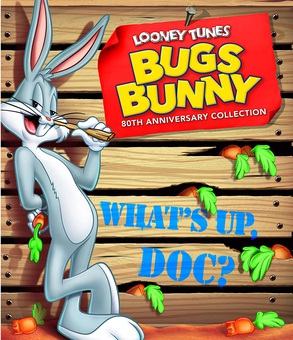
Looney Tunes: Bugs Bunny 80th Anniversary Collection is a Blu-ray Disc box-set released by Warner Bros. Home Entertainment on December 1, 2020. It contains 60 Looney Tunes and Merrie Melodies shorts starring Bugs Bunny and numerous bonus features and supplementary content. The set's packaging includes a slip book, a booklet, and a collectible Bugs Bunny Funko! POP doll.














